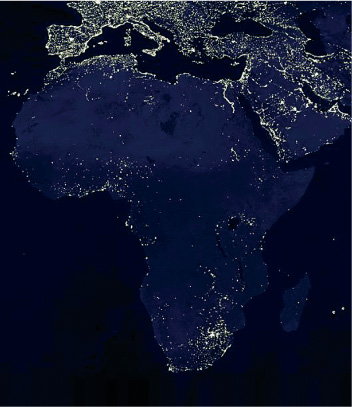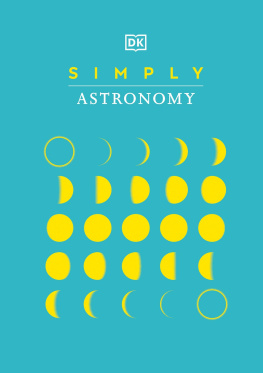
DEDICATION
To Alex
Published by Struik Nature
(an imprint of Random House Struik (Pty) Ltd)
Reg. No. 1966/003153/07
Wembley Square, First Floor, Solan Road,
Gardens, Cape Town, 8001
PO Box 1144, Cape Town, 8000 South Africa
Visit www.randomstruik.co.za and subscribe to our newsletter for monthly updates and news.
Copyright in text, 2006: Estate of Anthony Fairall
Copyright in maps and illustrations, 2006: Margie Walter
Copyright in artwork, 2006: Angela Key
Copyright in published edition, 2006: Random House Struik (Pty) Ltd
This eBook edition published in 2012, based on the print edition of 2006.
Publishing manager: Pippa Parker
Managing editor: Lynda Ingham-Brown
Editor: Pierra Abott
Project manager: Cisca Vennard
Designer: Robin Cox
Cartographer: Margie Walter
Artwork: Angela Key
Proofreader: Joanna Ward
Indexer: Cora Ovens
All rights reserved. No part of this publication may be reproduced, stored in a retrieval system, or transmitted, in any form or by any means, electronic, mechanical, photocopying, recording or otherwise, without the prior written permission of the copyright owner(s).
ISBN: 978 1 77007 215 2 (Print)
ISBN: 978 1 92057 232 7 (ePub)
ISBN: 978 1 92057 233 4 (Web PDF)
Picture credits:
Animal artwork at start of chapters by Angela Key, P.O. Box 465, Onrusriver 7201. All maps and explanatory diagrams designed by the author and drawn by Margie Walter, Iziko Planetarium.
Enhanced Milky Way () from Axel Mellinger, University of Potsdam.
Colour photography on pages from NASA.
Special thanks to the family of the late Albert Jansen for the use of the background star image on the cover, title, imprint and contents pages.
CONTENTS
INTRODUCTION
WHY STARGAZE FROM GAME RESERVES?

Numerous pairs of luminous eyes shine back in the light of my headlamp. I am standing outside a rest hut in Umfolozi. The winter night has fallen early and a herd of impala have bedded down beneath the nearby trees, unperturbed by the roving hyena that earlier made off with the lamb chops by the braaivleis fire. The eyes of the impala look like stars, and for a moment the stars above seem like staring eyes. I extinguish the headlamp as my gaze travels upward. There is the centre of the great city of stars in which we live. Rarely can one see it so clearly. The power generator has been turned off and not a single artificial light is in sight. After a day immersed in the beauty of the natural world, there is no reason to stop just because the sun has set. A game reserve is not only ideal for viewing animals but also the ideal location from which to view stars.
The best way of seeing stars is to go somewhere where there is as little artificial light as possible. Game reserves provide the perfect setting.
In centuries past it was not necessary to go to game reserves to see animals, or to see stars. In van Riebeecks time, lion, elephant and other big game abounded in the Cape Peninsula, let alone the rest of the subcontinent. For example, Franschhoek Pass only an hours drive from Cape Town was originally an elephant trail. (Elephants, like humans, sought the easiest and most sensible routes in crossing mountain ranges.) Sadly, widespread hunting destroyed their paradise. The establishment of farms and the development of towns and cities drove away the remaining animals until only pockets of the natural world were left, the game reserves of today.
Strangely enough, the same is true of stars. It seems odd, because you only have to look upwards to see the night sky, regardless of where you are situated on the surface of the Earth. Indeed, up until the 1960s that was true. Many enthusiastic amateur astronomers set up telescopes in their own backyards, and professional observatories operated in major cities. Both Cape Town and Johannesburg have suburbs named Observatory, after the institutions they hosted.
LIGHT POLLUTION
Over the past few decades, however, the stars appear to have dimmed with advances in technology having resulted in much more efficient ways of generating light. Outdoor lighting, in particular street lighting and security lighting, has become a ubiquitous feature of suburbia. Today sporting events are regularly held at night, something that was not possible years ago. We have the technology to generate enormous amounts of bright light, and we do. The problem with such light is that it not only illuminates the ground below, but also the atmosphere above. Astronomers were the first to become aware of this.
Even in cities, it used to be possible to see stars against a black sky. However, when the sky is no longer black, but grey, it is more difficult to see the fainter stars. Astronomers found it increasingly impractical to work from city observatories. Since the 1960s, cities have grown larger and more populous, and their light output has increased immensely. Fortunately, city engineers have realised that light that shines straight up into the sky is wasted light, and thus wasted electricity, and they have designed more effective light fittings to cut down on light pollution. However, we can only see the brighter stars from the cities.
WHY STARGAZE FROM GAME RESERVES?

The whole African continent has less light pollution than Europe. The light pollution that does exist is concentrated in the cities, making game reserves ideal for stargazing.
The best way of seeing stars is to go somewhere where there is as little artificial light as possible. Large stretches of the Karoo are one possibility. That is where we astronomers migrate when we want to study the stars nowadays, but, as an amateur, unless you are extremely dedicated, you are unlikely to make a special journey to the Karoo. Game reserves, which have very little artificial lighting are ideal for stargazing.
In general, South African winters provide fine and clear weather, and these are the perfect conditions for stargazing. If you are visiting a game reserve in this season (or any other for that matter) you are likely to be carrying warm clothes, a torch and a pair of binoculars for gameviewing by day and these should prove to be just as useful during your game viewing activities at night. Before you charge on and skip to the chapters covering the celestial Big Five, starting in to ensure that you get the most out of your stargazing experience.
Besides these practical factors, there is an even bigger reason why you should explore the night sky from a game reserve. The joy of game reserves is that you escape the office blocks, shopping malls, and traffic jams of busy city life. Game reserves provide time out and time to think. They afford us a chance to explore the natural world and appreciate our planet and its multitude of fauna and flora.
Game viewing is the experience of exploring the natural world, looking around us. Stargazing is also exposure to the natural world, but in this case it is looking up.
Both these experiences provide an opportunity to recharge the soul.
Next page












